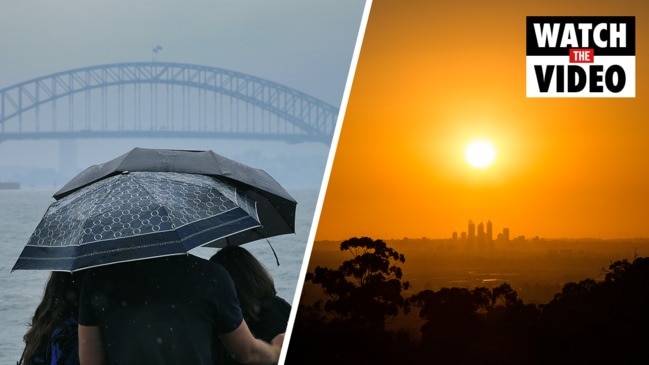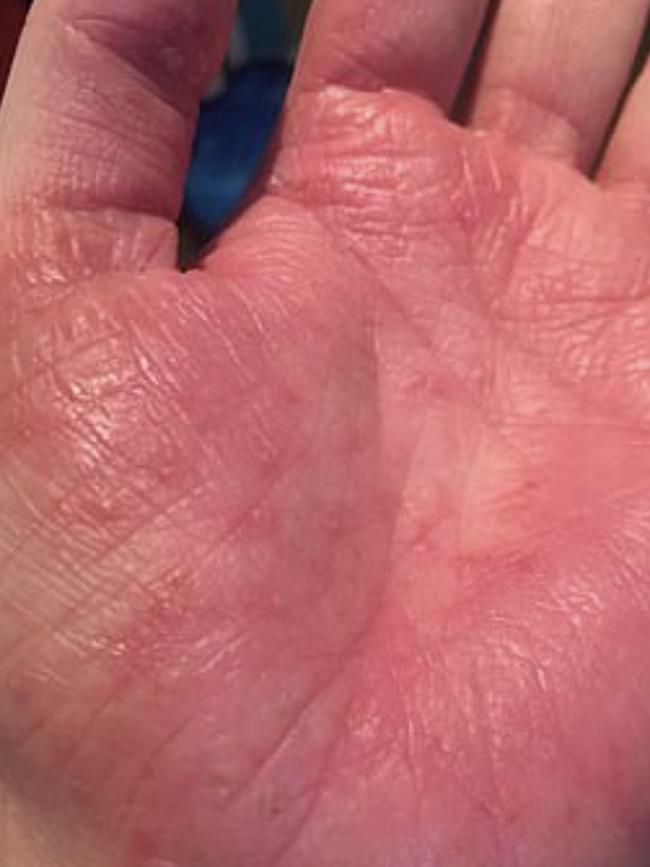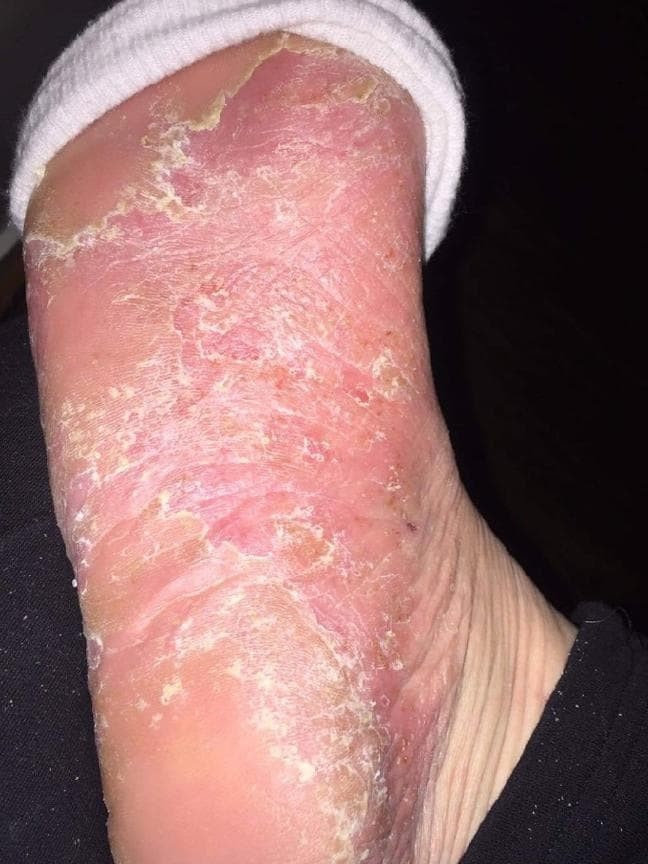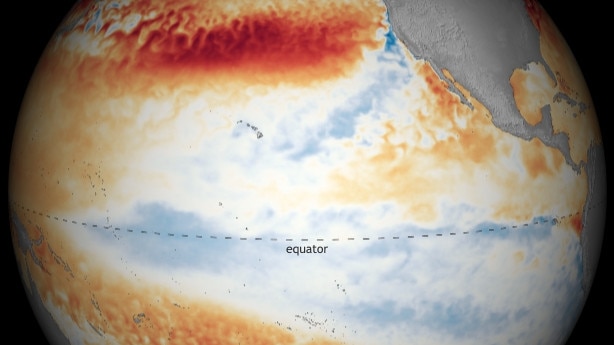Hidden effect of La Niña: Skin flare ups on the rise with more people reacting to humid weather
The complex weather phenomenon has had a nasty impact on the bodies of many Australians.

High humidity on the east coast is to blame for a spike in skin flare-ups, skin experts say, as La Niña wet weather affects most of the nation.
Nicole Preece, 35, has eczema and a rare form of psoriasis, and has broken out on her hands and feet due to the weather.
The Melbourne mum-of-six developed the skin conditions after the “traumatic” birth of her last daughter in 2016 when she had a three-hour caesarean and a bad reaction to the anaesthetic.
After being prescribed numerous creams and undergoing phototherapy, a strong medication usually given to cancer patients is what helped her skin improve.


But Ms Preece said her skin began to react again in October and La Niña weather has made it harder for it to improve, now suffering lip breakouts too.
She again has blisters, skin that dries and hardens, discoloured nails and red, inflamed skin on her hands and feet that bleeds at times.
“There is mental pain too because you just can’t do the things that would normally would like wash the dishes without gloves on. You can’t wash your hair because the soap on your hands just kills. Some days it hurts to walk,” Ms Preece said.
“The weather plays a role with all skin conditions and the weather being unstable doesn’t help.
“I can't go out in the sun much otherwise I flare up but the cold triggers it as well.”
La Niña typically means most of the nation has increased rainfall, cooler daytime temperatures in the south of the tropics and warmer overnight temperatures in the north.


Natural skin care brand MooGoo has had its business and social media pages “inundated” over the past few weeks, with at least a 30 per cent increase in the number of people seeking advice on how to treat their sensitive skin.
“The heat and humidity causes the skin to sweat and that dries skin out further, causing it to get quite itchy and irritated,” the company’s chief Melody Livingstone said.
“Most dermatologists say that humidity levels between 30 to 50 per cent are most ideal for eczema-prone people, but it’s been extremely high over the past few weeks.
“It’s been in the 90s in Sydney, and we’ve had so many people contacting us asking what they can do to soothe their skin, reduce redness and alleviate the itch.”
Ms Livingstone suggested people with sensitive skin moisturise often to help protect the skin barrier, try to keep cool and avoid sweating, and to look at the chemicals used in sunscreens and bug sprays.
She urged anyone who believed they were suffering from any skin condition to see a medical professional.



